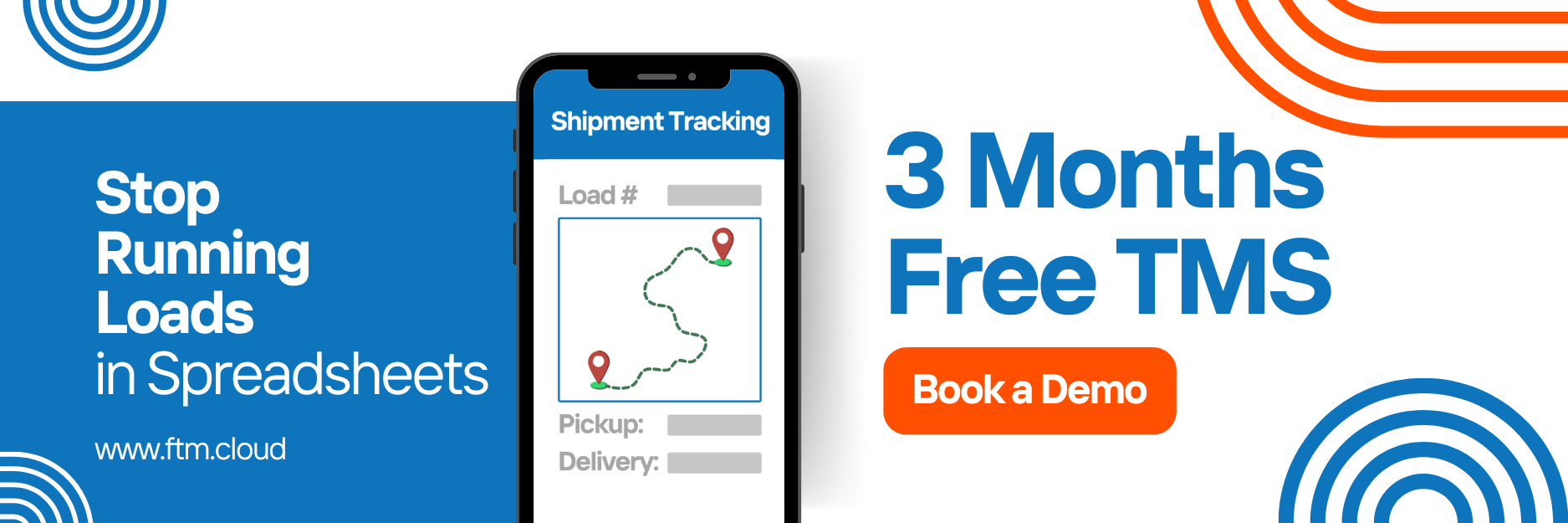Explore the differences, 3PL vs. 4PL logistics, evaluate which model aligns with your strategic goals, and learn how FTM’s powerful platform supports both.
Outsourcing logistics is common in freight management. As a shipper looking to optimize operations or a carrier growing via outsourced capacity, it’s important to know the difference between 3PL and 4PL.
This blog will look at how each model works, the benefits of each, and how using FTM can improve your performance regardless of which model you choose.
What Is a 3PL Provider?
A 3PL (Third‑Party Logistics) provider could execute different functions of your supply chain. Most often, this involves freight transportation, warehousing, and brokerage.
When do you use a 3PL?
- You want assistance with logistics execution.
- You still want to handle strategy and relationships in-house.
You use a 3PL to enable your business to be nimble when working across multiple lanes and/or during important spikes in freight volume.
Read more: Multi-Carrier Shipping for High-Volume Success
What Is a 4PL Provider?
A 4PL (Fourth-Party Logistics) provider oversees and manages your complete supply chain operation. If you utilize a 4PL, you are essentially getting complete strategic management. This strategic management includes selecting, managing, and evaluating 3PLs on your behalf.
When to use it:
- You want to outsource logistics strategy and the execution of logistics.
- You want all performance tracking and accountability under one logistics partner at some level.
A 4PL typically is the single point of contact for you, allowing you to take a complex logistics network and add some level of consistency and performance improvement.
Read more: AI-Powered TMS and Logistics Transformation
3PL vs 4PL logistics: Key Differences at a Glance
| Feature | 3PL Provider | 4PL Provider |
| Function | Tactical execution of freight/logistics | Strategic oversight and vendor orchestration |
| Control | You control relationships and strategy | 4PL assumes full control on your behalf |
| Complexity | Good for focused tasks or lanes | Better for complex, multi-vendor operations |
| Integration Requirement | Moderate (load boards, dispatch, analytics) | High (full-platform data consolidation) |
How FTM Supports Both Models
All carriers can be managed by you or 4PL can manage your network and FTM provides unified logistics operations:
- Unified Visibility: Get real-time shipment status, exceptions, and carrier performance.
- Dispatch Console: Assign loads and get the status all in one place, great for shippers and brokers.
- Custom Reporting: Compare lanes, providers, and KPIs without interfaces and toggling between systems.
- Alerts & Dashboards: Automatically alert on exceptions such as late pickups, claims, or dwell time.
Read more: Dispatch Console: Boost Logistics for Shippers, Brokers & Carriers

Choosing Between 3PL vs. 4PL logistics
Use a 3PL if:
- You have a logistics function but require assistance with transportation or storage from outside expertise.
- You would prefer to have one party to manage carriers, contracts, and strategy, but want to manage all the logistics operations internally.
Use a 4PL if:
- You have logistics operations across many geographies or partners.
- You would love to have one provider for any and all things between dispatch and delivery.
FTM provides the tools you need to evaluate and manage either model successfully, without sacrificing visibility, control, or data.
Measuring Success Regardless of Model
Whether it is a 3PL or 4PL, these KPIs, or Key Performance Indicators, will help you track your performance:
- On-Time Delivery Rate: You should take note of the execution brilliance across providers.
- Fill-Rate: You’re going to want to check equipment utilization and its connected metrics in the glossary.
- Cost per Mile: You can see the cost efficiencies across lanes and/or providers.
- Claims Rate: You’ll want to see service quality issues before they get out of hand.
- Dwell Time: You’ll want to take notice before trailers become bottlenecked, creating detention fees.
Read more: TMS for Shippers: Top Features for Load Visibility
Final Words in 3PL vs. 4PL Logistics
Choosing a 3PL or 4PL will depend on your goals for visibility, costs, and complexity. No matter which option you choose, FTM provides the visibility, automation and KPI intelligence you need to improve your logistics.
Schedule your free demo today to see how FTM supports modern logistics operations at any scale.

